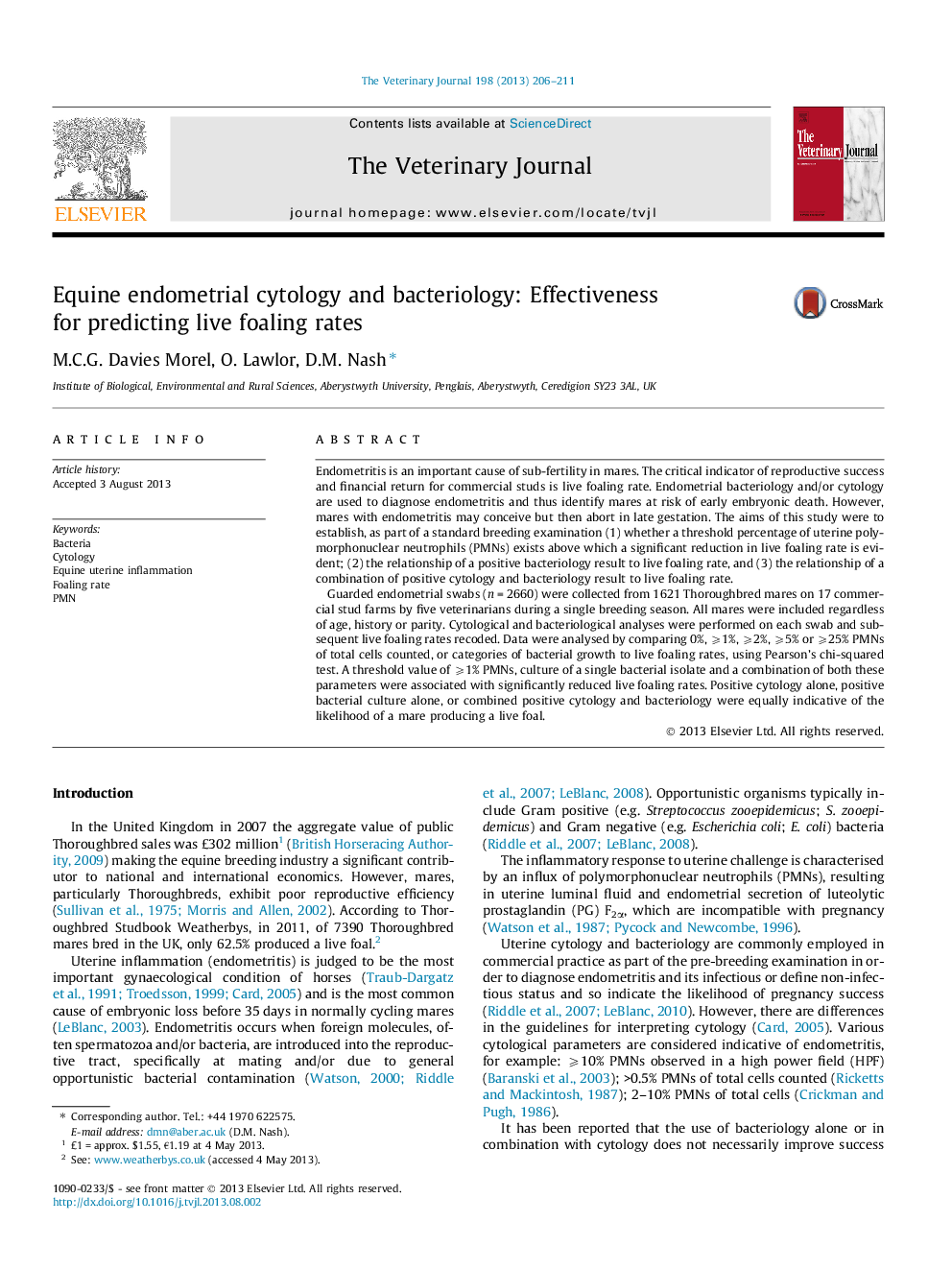| Article ID | Journal | Published Year | Pages | File Type |
|---|---|---|---|---|
| 5798503 | The Veterinary Journal | 2013 | 6 Pages |
Endometritis is an important cause of sub-fertility in mares. The critical indicator of reproductive success and financial return for commercial studs is live foaling rate. Endometrial bacteriology and/or cytology are used to diagnose endometritis and thus identify mares at risk of early embryonic death. However, mares with endometritis may conceive but then abort in late gestation. The aims of this study were to establish, as part of a standard breeding examination (1) whether a threshold percentage of uterine polymorphonuclear neutrophils (PMNs) exists above which a significant reduction in live foaling rate is evident; (2) the relationship of a positive bacteriology result to live foaling rate, and (3) the relationship of a combination of positive cytology and bacteriology result to live foaling rate.Guarded endometrial swabs (n = 2660) were collected from 1621 Thoroughbred mares on 17 commercial stud farms by five veterinarians during a single breeding season. All mares were included regardless of age, history or parity. Cytological and bacteriological analyses were performed on each swab and subsequent live foaling rates recoded. Data were analysed by comparing 0%, ⩾1%, ⩾2%, ⩾5% or ⩾25% PMNs of total cells counted, or categories of bacterial growth to live foaling rates, using Pearson's chi-squared test. A threshold value of ⩾1% PMNs, culture of a single bacterial isolate and a combination of both these parameters were associated with significantly reduced live foaling rates. Positive cytology alone, positive bacterial culture alone, or combined positive cytology and bacteriology were equally indicative of the likelihood of a mare producing a live foal.
